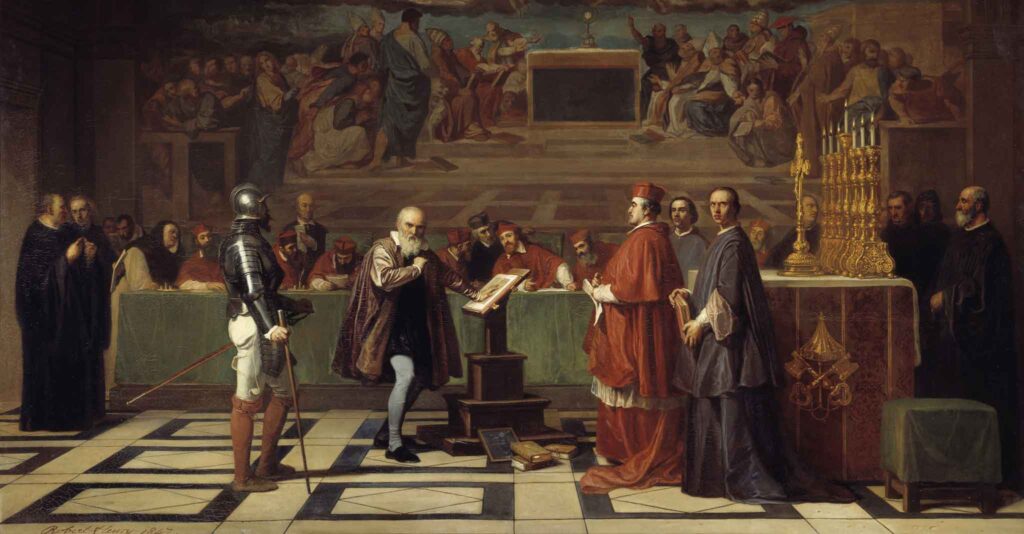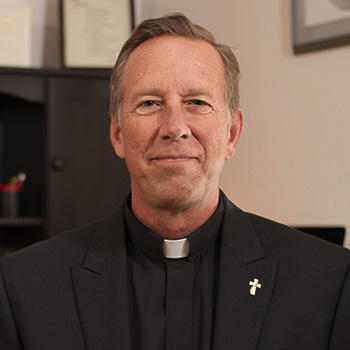
The fact is, as Maddison notes, the Inquisition commissioned by the Church was actually “an attempt to stop unjust executions” by the State. Why is that the case? The Church herself did not directly execute heretics.
By Deacon Frederick Bartels
29 April 2024
Is the Church guilty of “mass murder” and roasting heretics? When people make these grossly exaggerated accusations, they often have the Spanish Inquisition in mind. However, what they actually have in mind is not even that, for the Spanish Inquisition was not at all what many modern day Protestants (or even the general public) claim it was.
In the article “The Real Inquisition,” the historian Thomas Madden points out that the Inquisition (typically the Spanish Inquisition) is often wielded as a club to beat the Church. But this club loses its weight when the historical facts are unveiled, such as how heresy was viewed by the State as an attack on the State, a rejection of the authority of secular leaders, and a significant danger to the fabric of society itself.
Let’s talk about heresy for a moment. From the Church’s historical point of view, heresy posed a danger to souls and thus must be corrected. It tends to spread from person to person like a cancer which undermines the truth and places salvation at risk. Anyone who reads the scriptures should easily arrive at the same conclusion. For example, our Lord himself said, “He who believes and is baptized will be saved; but he who does not believe will be condemned” (Mark 16:16). Those are strong words, but they come from God himself. Imagine if people began to teach that baptism did not save, or that adhering to Christ’s teaching was unnecessary for salvation? It’s easy to see how that kind of thing is a serious spiritual problem—one which need not be imagined because it is unfortunately rather common today.
Before I get into more detail, Catholics readily acknowledge that the Church is composed of sinners. There are power hungry, greedy, and traitorous members in her fold—both clergy, religious, and laity alike. These men have done and continue to do bad things. This, of course, should not surprise anyone, for Christ and Paul both warned that there would be wolves among Church leaders (Matt 7:15; Acts 20:29). We need only think of Judas Iscariot as a prime example. But these facts do not defeat the divine constitution of the Catholic Church as founded by Christ himself for the salvation of souls. In other words, the test of the truth of the Church is not the behavior of her members, but the life and teaching of Christ and the continuity of truth found in the Church’s doctrines on faith and morals.
The fact is, Christ established one true Church, as imperfect as her members were or are. Christ knew that some of the Church’s members would fail in atrocious ways. Nevertheless, he founded his Church on the headship of Peter (Matt 16:17-19) as indefectible. And the Church remains today as God’s instrument of salvation, grace, and truth.
Also, it goes without saying that all men are sinners. Nefarious behavior can be found in every religion and every Christian community. Those who point at the wrong behavior of members of the Church and say, “Look at that! The Catholic Church does not belong to God!” must also apply the same rigor to their own religious communities.
For example, if we are to charge the Catholic Church with the bloodlust of the Inquisition, we must also recall that the first Protestants punished those who they believed to be heretics. Both Luther and Calvin sanctioned the power of the State to find and punish those who objected to their teaching. Calvin banished those who did not share his theological views from Geneva. He permitted and even ordered, in some cases, people he viewed as “heretics” to be put to death. Two examples include Jacques Gouet, who was tortured and beheaded in 1547, and Michael Servetus, who was burned at the stake in 1553.
As a Catholic Answers tract notes, “In England and Ireland, Reformers engaged in their own ruthless inquisitions and executions. Thousands of English and Irish Catholics were put to death—many by being hanged, drawn, and quartered—for practicing the Catholic faith and refusing to become Protestant.” These claims can easily be verified by non-Catholic sources.
But back to the Inquisition.
The fact is, as Maddison notes, the Inquisition commissioned by the Church was actually “an attempt to stop unjust executions” by the State. Why is that the case? The Church herself did not directly execute heretics. It was the function of the State to do that. The Inquisition was put in place to afford people accused of heresy an opportunity to defend themselves in a fair trial, to learn why their views were wrong, recant those views, and be brought back into the fold of the Church. All of this was designed to prevent false accusations and people being handed over to the State and wrongly judged by secular authorities with little to no theological expertise. In a word, its intent was spiritually medicinal.
During the Medieval period, if a heretic adamantly held to his error, the Church would then hand him over to the State. But doing that was a last resort.
We might ask, why should Maddison’s views be accepted as trustworthy? For one, they are not just his. When John Paul II wanted to find out more about what went on during the Inquisition, he opened the Vatican archives to a team of 30 historical scholars from around the world. As Maddison points out, the outcome was an 800-page report. What was its finding? The “Inquisition was not so bad after all,” says Maddison. He goes on to say, “Torture was rare and only about 1 percent of those brought before the Spanish Inquisition were actually executed.”
That’s a far cry from the “mass murder” claims of those who wish to beat the Church into the ground. Maddison goes on to tell us:
“As this new report confirms, most people accused of heresy by the Inquisition were either acquitted or their sentences suspended. Those found guilty of grave error were allowed to confess their sin, do penance, and be restored to the Body of Christ.”
That was the purpose of the Inquisition established by the Church. It doesn’t sound at all like “mass murder.”
Finally, if we wish to understand why the Inquisition was in place and why the State did what it did, we must have an accurate historical consciousness of the medieval period. Things back then were not at all as they are today, at least in most parts of the world. It is intellectually inconsistent to apply our modern sensibilities to the 12th or 13th centuries.
I encourage everyone to read Maddison’s article linked above. If we desire to know what’s true—and we should all have that desire—it will not do to listen to and accept inaccuracies and propaganda that fail to consider the actual history and context of events in the past.

Deacon Frederick Bartels is a member of the Catholic clergy who serves the Church in the diocese of Pueblo. He holds an MA in Theology and Educational Ministry, and is a Catholic educator, public speaker, and evangelist who strives to infuse culture with the saving principles of the gospel. For more, visit YouTube, iTunes and Twitter.
Leave a Reply